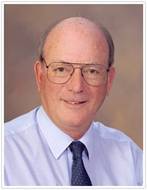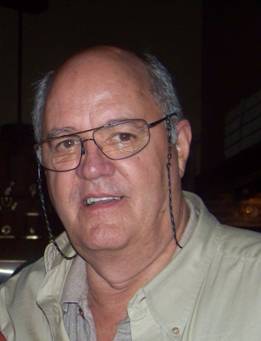Memorial and Regards to Lunatics

Bill Muehlberger and “Big Muley” 61016
Bill Muehlberger, Longtime UT Geology Professor, dies
Bill Muehlberger, a longtime University of Texas geology professor who also taught geology to astronauts, died in September of natural causes. He was 87. Born in New York, Muehlberger grew up in Hollywood, Calif., and received bachelor’s, master’s and doctoral degrees in geology from the California Institute of Technology. He taught at the University of Texas for nearly 40 years before retiring in 1992, but continued to serve as professor emeritus and keep an office there.
NASA first asked Muehlberger in the mid-1960s to train Apollo astronauts in geology, so they could identify and understand features on the Moon. As a NASA consultant, Muehlberger led a staff that helped determine where astronauts would land to collect rock samples that might provide insight into the history and composition of the Moon. Muehlberger trained the last four men to walk on the Moon — Charles Duke and John Young on Apollo 16, Gene Cernan and Jack Schmitt on Apollo 17 — as well as the backup crew on Apollo 15. NASA even named a Moon rock after him. At nearly 26 pounds, “Big Muley” is the largest piece of the Moon ever brought back to earth.
“First and foremost, he was a teacher. He loved to teach and had a motivated and captivating audience” in the astronauts, his son Eric said.
Muehlberger spent 15 years on another ambitious project: mapping the geologic and tectonic structures of North America. Sharon Mosher, dean of the Jackson School of Geosciences at UT, called it “an award-winning map that hangs in probably every geoscience building in the country”.
Michael J. Drake, 1946–2011
Michael J. Drake
Michael J. Drake, Regents’ Professor, Director of the University of Arizona’s (UA) Lunar and Planetary Laboratory (LPL), and head of the Department of Planetary Sciences, died September 21 at The University of Arizona Medical Center–University Campus in Tucson, Arizona. He was 65.
Drake, who joined UA in 1973 and headed LPL and the planetary sciences department since 1994, was the principal investigator of the most ambitious UA project to date, OSIRIS-REx, an $800 million mission designed to retrieve a sample of an asteroid and return it to Earth. OSIRIS-REx is due to launch in 2016.
Under Drake’s leadership, the LPL grew from a small group of geologists and astronomers into an international powerhouse of research into the solar system. Drake played a key role in a succession of ever more high–profile space projects that garnered international attention for LPL and the university. Those include the Cassini mission to explore Saturn, the Gamma-Ray Spectrometer onboard NASA’s Mars Odyssey Orbiter, the HiRISE camera onboard NASA’s Mars Reconnaissance Orbiter, and the Phoenix Mars Lander.
A native of Bristol, England, Drake graduated with a degree in geology from Victoria University in Manchester, and then he left for a doctoral program in geology from the University of Oregon, graduating in 1972. After a postdoctoral program at the Smithsonian Astrophysical Observatory, Drake moved to, and immediately fell in love with, Arizona.
Timothy Swindle, the assistant director at LPL, summed it up, saying, “Not only was he a world-class scientist, but he was a tireless advocate for the Lunar and Planetary Laboratory and all the people who have worked here.”
Jack Warren
Retired Lunatic, Jack Warren
Jack Warren, one of the unsung heroes of the space program, will retired from the Johnson Space Center Curation Office on Friday January 27. Jack opened the first rock box containing Apollo samples and has been deeply involved in every aspect of Curation during a 45 year career. Jack began his career at the Manned Spacecraft Center, now JSC, in June, 1966 working for Brown & Root-Northrop. His first assignment was working in Building 32 supporting the large vacuum chambers (he was hired because he had been working derricks on a drilling rig and didn’t mind heights). Jack supported testing in Chamber A for the Apollo Service and Command Modules and Chamber B for the Lunar Excursion Module.
Jack Warren in 1969 (1003 ALSRC)
In 1968 Jack transferred to the Lunar Sample Processing Group. His duties included reviewing blueprints and operation maintenance manuals. He designed a mock–up F201 vacuum chamber out of a wood crate.
Jack drew the shortest straw from a group of about 12 technicians so he was given the task of opening the first rock box from the Moon in 1969. He continued working with the Lunar Sample Processing Group from Apollo 11 through Apollo 17.
In 1981 Jack began working on the Cosmic Dust Project and in April of 1982 processed the first samples using Don Brownlee’s Lab in Washington University, since the JSC Cosmic Dust lab wasn’t finished yet. By 1984 he started the Facility for the Optical Inspection of Large Surfaces (FOILS) lab which supported studies of space–exposed hardware including Solar Max, Long Duration Exposure Facility (LDEF), Orbital Debris Collector (ODC), PALAPA Blanket and the EURECA Blanket.
In 1998 Jack helped with the Genesis Project Team by assisting in finding a location to build a Class 10 Clean Room for spacecraft preparation and Curation. He was also a key member of the team that went to Utah to receive the Genesis capsule. Following Genesis, Jack became a member of the Stardust Project Team, where he helped to retrieve the capsule and then returned to JSC to process the samples.
From 2006 to the present Jack has worked primarily in the Cosmic Dust and Stardust labs, but every other lab and facility has called on his expert knowledge and skills. Jack’s total career at JSC has spanned 45 years and 3 months.
Articles from the Lunar Server List-Clive Neal



